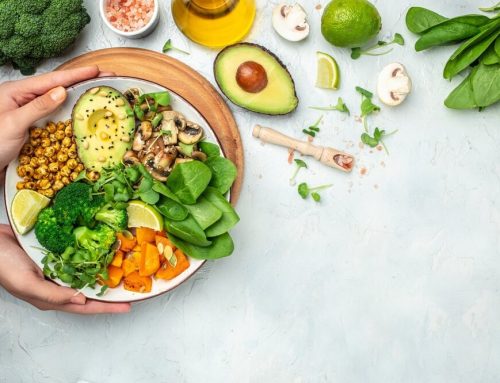Ayurveda is an ancient Indian holistic medicine system that focuses on personal well-being and your ability to live in harmony not only with yourself but with your surroundings. The Ayurvedic diet works by identifying each body by a specific body type, or dosha, and then eating and living according to your dosha. Each dosha has specific characteristics that make them unique. The ultimate goal of the Ayurvedic diet is to live a more balanced mental and physical life.
The three doshas of Ayurveda are:
Vata
Vata’s are typically characterised physically by small, thin frames that have an excellent ease of movement. They get sudden bursts of energy, but also sudden fatigue. They have physical qualities that are dry and cold (such as dry skin and hair and cold hands and feet), and when they are imbalanced they will usually experience weight loss, constipation, restlessness, weakness and digestive issues, to which they are also sensitive in general.
To balance this dosha you should always seek to be warm, favoring clothes that will keep you warm and that are also warm in color. Sleep and regular, large quantity meals (though be sure not to overeat) are also key in keeping the lightness of Vata’s balanced.
Sweet, juicy fruits like mangoes, melons and peaches should be favored over dry fruits like apples, and spices like cardamom, ginger, cilantro and tarragon are the best. Light exercise works best, along with calming activities like yoga, Tai Chi, dance, golf, aerobics, and massages will help keep you emotionally balanced.
Pitta
Pitta’s are usually medium in size and weight and are have hot, sharp, sour, and pungent characteristics. When balanced, they have good skin, strong appetites and lots of energy. An imbalance in Pittas can lead to skin rashes, excessive body heat and heartburn.
To maintain balance, Pittas should seek sweetness and coolness, and a good balance between rest and activity. It’s important not to skip meals, and to spend a lot of time in nature—particularly in environments with cool green or blue colors.
It’s important to focus on foods that are cool and sweet to balance out the heat and sourness of Pittas. Dairy should be a key part of your diet, and sweet fruits such as grapes, cherries, and mangoes are recommended over sour fruits like berries. Cool fruits like cucumbers, asparagus, and broccoli are also recommended. Avoid hot spices like chili peppers and opt instead for milder spices like coriander and fennel. Any exercises that can be done in nature—such as midnight walks or calm hikes in the woods—are best.
Kapha
Kapha’s are the largest and strongest body type and exhibit characteristics that are slow, heavy, and solid. When balanced, they have thick hair and beautiful skin, and are loyal and patient. Imbalance can lead to weight gain, excessive sleeping, and depression.
The most important thing to maintain balance is stimulation—too much routine can make Kaphas imbalanced. They should seek warmth and avoid dampness, surrounding themselves in bright colors like red, orange, and yellow. Regular exercise and clean spaces are also very important.
Kaphas should avoid dairy and most sweeteners—except honey. Light fruits like apples and pears are best, while heavy fruits like bananas and melons should be avoided. Most vegetables agree with Kaphas, but sweet and juicy vegetables like sweet potatoes and tomatoes should be eaten sparingly. The only seasoning you should use is salt. Stimulating exercises that are heavy on cardio—such as cycling and competitive sports—are best for Kaphas.
A key factor in harnessing the benefits of this mind-body diet is to see food as a happy, soulful experience. Avoid making or consuming food when you are sad or angry, as this will turn eating into a toxic experience. So figure out your dominant dosha (though seeing an Ayurvedic physician is the most effective way of figuring this out, there are also a multitude of quizzes online) and start living a happier, healthier, more balanced life!






Leave A Comment